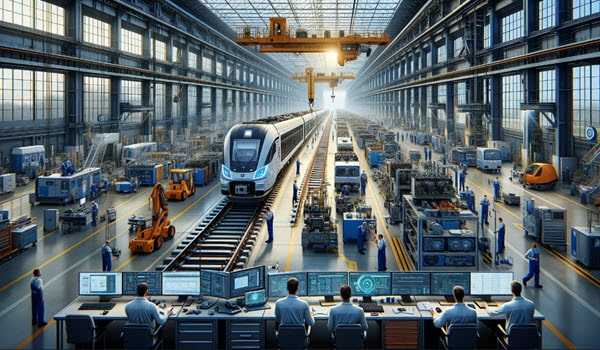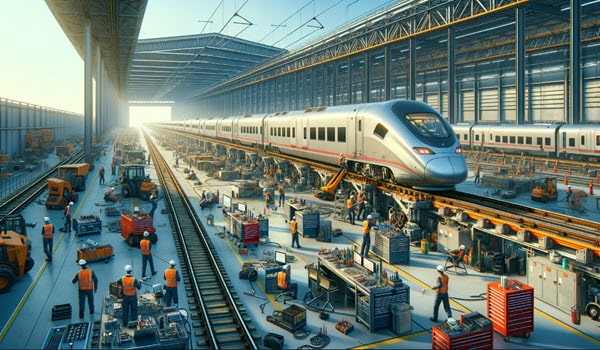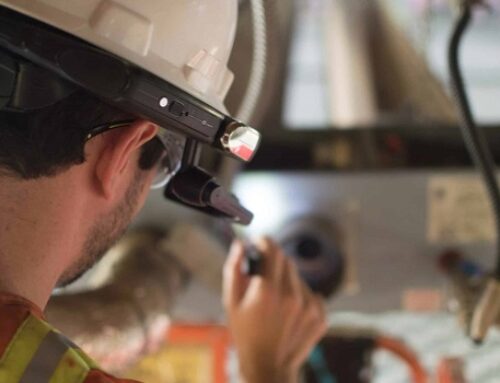You should know that railway equipment is extremely demanding in terms of maintenance, due to the complexity of electrical and mechanical systems and the number of moving parts. To ensure safe and reliable performance, railway companies must carry out regular maintenance interventions and replace faulty equipment as quickly as possible.
Given that the railway industry is both mobile and dynamic, maintenance technicians need an intelligent, mobile, and real-time solution to ensure the proper functioning of all their equipment.
I. What are the fundamentals of Operational Condition Maintenance?
Acronym for Operational Condition Maintenance (OCM), MAC is a fairly complex process primarily revolving around 4 types of maintenance:
- Preventive
- Corrective
- Conditional
- Predictive

Each type of maintenance meets specific needs and aims to reduce equipment downtime.
- Preventive maintenance is based on regular and planned interventions. This helps prevent breakdowns before they occur.
- Concurrently, corrective maintenance occurs following the detection of a failure. The aim is to restore the equipment to working order.
- Conditional maintenance, on the other hand, is based on continuous monitoring of equipment condition and performance. This is done via sensors and data analysis. This type of maintenance allows for targeted and effective interventions. Note that it also helps limit unnecessary interventions.
- Predictive maintenance uses algorithmic models and predictive analysis to anticipate failures and plan maintenance with increased accuracy.
As you understand, OCM encompasses diverse maintenance practices that, when well orchestrated, ensure the safety and availability of equipment. The goal is to ensure that these materials remain safe and operational at all times. This effectively addresses the requirements of the missions assigned to them.
To successfully carry out these interventions, good coordination among different actors is important. Maintenance teams, engineers, parts suppliers, and operators must collaborate effectively to share critical information and act in concert.
It is in this context that digital solutions prove to be valuable tools. These tools simplify collaboration, allowing for the sharing and tracking of all relevant information and data. This ensures the smoothness of OCM operations.
II. What are the challenges of Operational Condition Maintenance?
To improve Operational Condition Maintenance (OCM) specifically for railway infrastructures (mainly rails, sleepers, signaling, and communication systems), it is important to focus on strategies ensuring their durability, safety, and reliability.
What you need to know is that generally, operational condition maintenance mainly includes:
- Ensuring the availability of your infrastructure (=rails)
- Preventive maintenance with constant monitoring to anticipate potential incidents
- Corrective maintenance in response to potential incidents
- Replacement and installation of new equipment in case of failure
Moreover, its advantages are numerous:
-
- Anomaly and risk management are improved;
- Equipment usage rate is better;
- The operational equipment view is broader;
- Maintenance costs are optimized:
- Equipment immobilization is anticipated;
- Logistic support costs are reduced;
- Failing systems are repaired more quickly;
III. Improving OCM: What are the trends and innovations?
Artificial Intelligence and Predictive Maintenance
Machine learning algorithms and artificial intelligence (AI) enable predictive maintenance solutions. This allows for anticipating problems and failures by analyzing data and trends.
Note that predictive maintenance helps improve the performance and reliability of information systems while reducing costs and intervention times.
Internet of Things (IoT) and Equipment Management
The Internet of Things (IoT) allows connecting infrastructures and electronic equipment to management and monitoring platforms. This simplifies control, monitoring, and maintenance of servers.
IoT contributes to improving Operational Condition Maintenance by ensuring increased visibility on equipment status and simplifying problem and failure detection.
Transition to SaaS and Cloud Services
The transition to Software as a Service (SaaS) and cloud services promises new opportunities. This facilitates software and network infrastructure management, updating, and securing.
IV. Picomto: Ensuring Effective OCM
The key to the success of OCM for railway infrastructures lies in a strategic approach that integrates best practices in the field. Therefore, as part of a modern approach, turning to digitalization presents itself as an ideal solution to ensure effective OCM.
Opting for Picomto, your digital solution, facilitates the sharing and collaboration of information among business actors. This is crucial for effective maintenance. This digital tool enables precise data tracking and informed decision-making. This is done while offering complete visibility into equipment status.
Moreover, Picomto allows for planning, tracking, and analyzing assistance interventions and managing spare parts stocks and maintenance contracts. It also simplifies planning and tracking of actions by improving collaboration and communication among teams.
Additionally, this digital tool allows for real-time monitoring of infrastructure status. It helps to:
- quickly identify problems and failures
- implement corrective actions to reduce the impact on business activities

On the other hand, although Picomto is not specifically developed solely for the railway sector, its application can greatly benefit personnel training and development of skills. Indeed, it aids in:
- Digitization of maintenance procedures
- Interactive training via digital manuals and guides
- Quick access to information
- Etc.
Finally, Picomto contributes to reducing costs and intervention times, while also improving the reliability and efficiency of information systems.




Leave A Comment